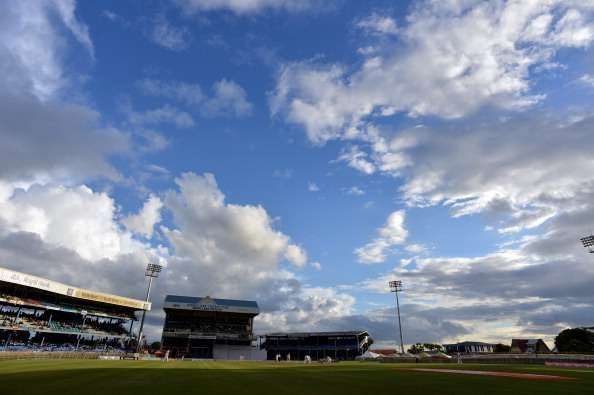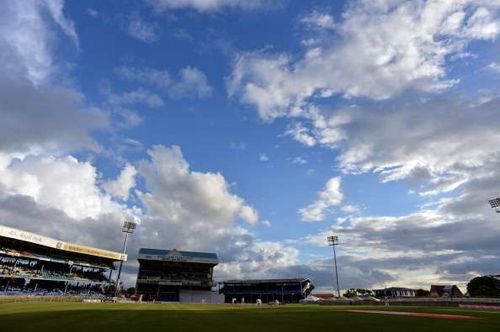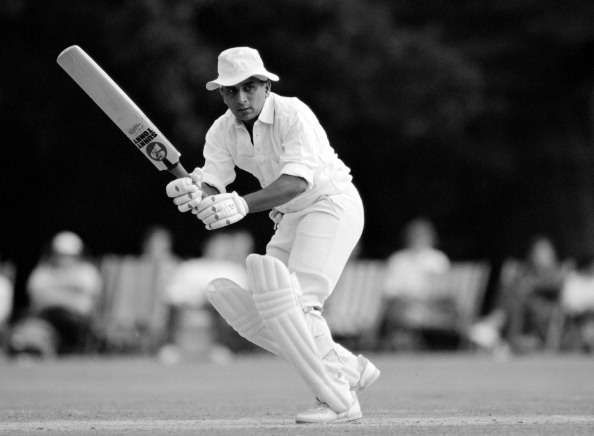
India's record at Queen's Park Oval, Port-of-Spain, Trinidad
The Queen’s Park Oval at Port-of-Spain, Trinidad is perhaps one of the most regal-sounding venues in world cricket. For a sport that shares such close ties with the complex issue of social class, frequently stereotyped as the domain of the gentry or army officers of the British Raj, it seems apt that the venue for the final Test between India and the West Indies sounds as though it was once graced by Her Majesty.
The sporting brand of royalty is one that differs greatly from its societal progenitor. Commonalities between the two, such as the importance of family name, do exist, but glory and tradition are the main currencies that athletic royalty conducts trade in. The West Indies once went 59 years without defeat at Bridgetown, Barbados, and this distinction alone should be enough to qualify the Kensington Oval as the traditional seat of power in the Caribbean for the home side.
However, India’s clinching of the series at St. Lucia certainly merits a re-examination of that claim - this time from the visitors’ perspective. For the fourth and final Test of the series, India return to their favourite venue in the Caribbean, a ground where the tourists have won three of their seven Tests in the West Indies, marked by eye-catching debuts, record run-chases and no small measure of history.
The History of the Ground
The first Indians, numbering 213, arrived in Trinidad and Tobago on 30 May 1845, on the vessel Fatel Razack. 150 years later, this date was declared ‘Arrival Day’ by the government to celebrate the arrival of the various nationalities (including Indians) to the islands and their contribution to their economy and culture in the years since.
The arrivals came at the zenith of colonialism. Although it had been abolished via the Slavery Abolition Act of 1833 (effective from 1834), slavery had been replaced by an alternate, though, somewhat similar arrangement of indentureship. From that point on, until 1917, 143,939 Indians entered Trinidad as labourers under this system. Though there were initial difficulties, the new arrivals eventually assimilated into the local culture and even manufactured a distinct iteration of the same on their own – Indo-Trinidadian.
The British eventually left; Trinidad and Tobago gained independence in 1962, but the Indians stayed on. There is a little corner of a foreign field that is forever India, and it became the go-to spot in the Caribbean for migrants. And it was in the middle of this period when the indentured labourers arrived that, in 1896, it became the home of the Queen’s Park Cricket Club.
With the capacity to accommodate 25,000 within its circumference, the Queen’s Park Oval is undoubtedly a large ground. It is also utterly breathtaking.
With its vibrant blue skies, lazily drifting clouds and bright sense of colour, the Queen’s Park Oval thoroughly disputes that assertion. It seems difficult to believe that Navjot Singh Sidhu’s plodding abomination that was the second-slowest double century in Test cricket was recorded here in 1997.
India’s Numbers at Queen’s Park Oval
Port-of-Spain is a rather interesting venue for a slightly unusual reason. Until 1976, it played host to not one but two Tests when India were on tour. This is what happened on the first four tours in 1953, 1962, 1971 and 1976. This reduced to just one Test per series for the next four tours, while the 2006 and 2011 tours did not feature Tests at the Queen’s Park Oval. The ongoing series is the first since 2002 to schedule a Test at Trinidad.
The reading of India’s raw numbers at Trinidad is almost as pretty as the ground itself. In 49 years’ of touring the West Indies, India have played 12 Tests at this venue, winning a record three games, losing three and drawing the other six. India have also crossed the 400-run barrier in seven innings, their highest total at this ground an immense 469-7 in March 1983. The match was drawn.
Indeed, India's first ever Test in the West Indies was played at Port-of-Spain. In 1971, the fifth Test produced the highest match aggregate at the ground: a mammoth 1478 runs in a drawn game. It was in this Test that Sunil Gavaskar scored twin hundreds, the latter score of 220 the highest ever by an Indian at this ground.
The legend of the Mumbai batsman outside his home country is perhaps the greatest in the Caribbean, and the way he mastered the world’s finest side in their backyard was excellent.
Twenty-four innings in the Caribbean over twelve years produced 1404 runs at 70.20 with seven hundreds and four fifties. Remarkably, those nine innings which were played in Port-of-Spain brought 793 runs, four hundreds and two fifties – over 56% of the runs Gavaskar ever scored in the Caribbean. He is, by a distance, India’s most successful batsman at that ground.
Polly Umrigar (580 runs; two hundreds and four fifties) and Mohinder Amarnath (304; one and two) are the second and third most successful batsmen for India in Trinidad. Umrigar, in fact, scored India’s first-ever hundred in the Caribbean in the very first Test in 1953: that game also produced the two sides’ second-highest Test aggregate at the ground – a staggering 1291 runs for the fall of just 30 wickets.
Why have India fared well here?
So what is it that makes this venue India’s favourite hunting ground in the Caribbean? Two reasons have been most commonly cited. First, the large migrant Indian population gives the touring party the feeling of playing in front of a second home crowd on the other side of the world. Second, the Queen’s Park Oval pitch is the only one in the Caribbean that has traditionally assisted spinners.
The records back up this claim. Of the five most successful wicket-takers for India at Trinidad, the first four are spinners. Kapil Dev (10 wickets) is the only pacer for miles. All four members of the famous spin quartet feature in the top ten (57 wickets between them), as do Anil Kumble, Sunil Joshi, Salim Durani and Subhash Gupte.
The latter took 7-162 in the first Test in 1953, the best bowling in an innings by an Indian on that ground, while Bishan Singh Bedi’s match analysis of 8-126 in the second Test in 1976 is the best in a full game.
That second Test in 1976 wasn’t, however, the most exciting match of the series. Each of India’s three victories at Port-of-Spain are historic – packed with history, drama and great cricket. The second Test in 1971 was Gavaskar’s debut – he marked it with a pair of fifties.
A hundred from Dilip Sardesai and fifteen wickets pooled by Bedi, Prasanna and Venkataraghavan gave India victory by 7 wickets – their first-ever Test win over the West Indies. Draws in the remaining games meant that they took a historic series by a 0-1 margin.
Sourav Ganguly's win in 2002 broke a long duck of underachievement outside the subcontinent. It was attritional cricket all the way through, as some determined batting from Ganguly, Sachin Tendulkar and VVS Laxman left the home side a target of 313 to chase. Initially, their staunch resistance proved difficult to break.
The old warhorse Javagal Srinath rolled back the years to take six wickets in the match. And finally, Zaheer Khan removed the last man Cameron Cuffy to deliver a brilliant victory by 37 runs.
But none come close to matching that fateful chase in April 1976. Set a mammoth 403 to chase for victory in the fourth innings, India summoned prodigious batting skill and immense courage to wrest the match away from the home side. Gavaskar (102), Amarnath (85) and Gundappa Vishwanath (112) batted fitfully to deliver a monumental victory by six wickets after 147 overs of willow-wielding.
It was the highest successful fourth-innings run chase in history. And although it has been surpassed twice since, nobody associated with the sport will ever forget the heroics of four decades ago. It was the time Indian cricket defied itself to pull off the improbable.

